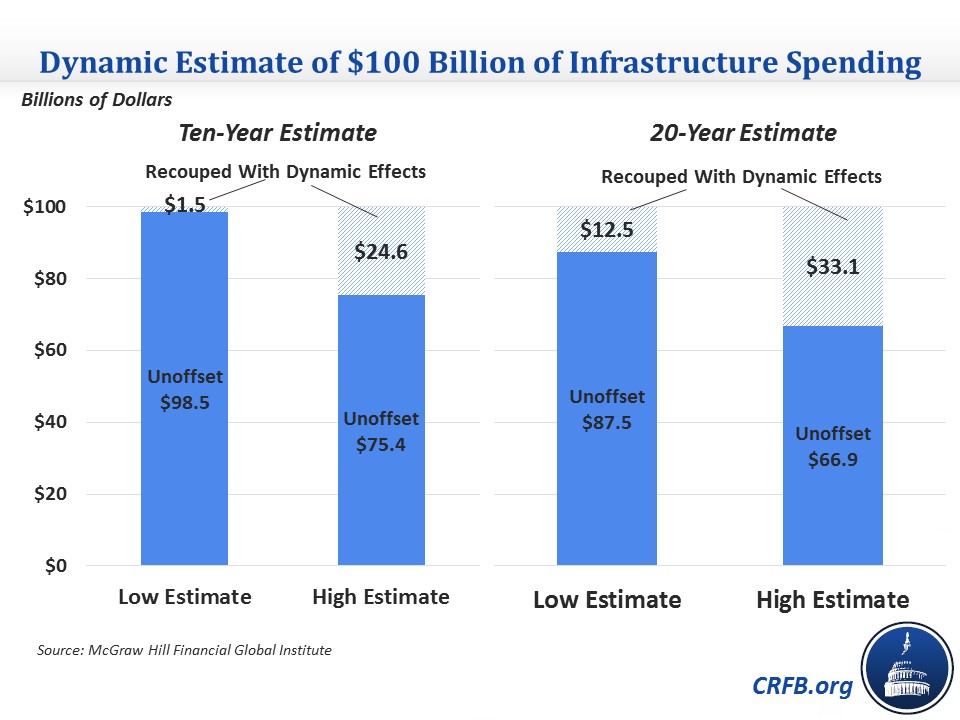Dynamic Infrastructure Estimate Gives Lawmakers Food for Thought
Three weeks from the deadline to deal with highway funding, a new report commissioned by the McGraw Hill Financial Global Institute gives Congress some sense of the economic stakes of their decisions. The report, written by American Action Forum President Doug Holtz-Eakin and Progressive Policy Institute Chief Economic Strategist Michael Mandel, looks to apply dynamic scoring to increased infrastructure spending. Although much of the focus on the dynamic scoring rule included in the Congressional budget was on its use to analyze tax changes, they argue that it is also important to extend the requirement to legislation that funds the nation's infrastructure projects.
As the authors note, part of the reason why there is less discussion of infrastructure spending in connection with dynamic scoring is because the rule only applies to changes in mandatory spending and revenue, whereas infrastructure spending is discretionary, so even a large increase in spending wouldn't automatically trigger a dynamic score. In addition, many bills have been small, particularly those involving highway spending since they have generally maintained spending at around current levels. But Congressional leadership has discretion to compel CBO to dynamically score a bill, and the authors argue the agency should do so for infrastructure bills.
Holtz-Eakin and Mandel produce their own 20-year dynamic estimate of the cost of increased infrastructure spending, which accounts for the impact on both short-term aggregate demand and longer-term effects on productivity. Based on estimates from CBO and the IMF, they conservatively assume a short-term multiplier of 0.8 -- $1 of spending increases GDP by $0.8 -- during slack economic conditions and a lower one as the economy approaches full employment. For longer-term effects, they assume a productivity elasticity of 0.03, meaning that a 1 percent increase in spending increases productivity by 0.03 percent per year.
Depending on the state of the economy and the efficiency of the projects undertaken, the authors find that $100 billion of infrastructure spending would increase GDP by between $62.5 billion and $165.5 billion over 20 years, and between one-eighth and one-third of the cost would be recovered. Over the first 10 years, the main timeframe for current budget enforcement, the effects would be less pronounced, and somewhere between 1.5 percent and one-quarter of the cost would be recouped.

There are a few issues policymakers should keep in mind when taking dynamic factors into account in budgetary estimates. For one, the effects are notably uncertain, as our report on dynamic scoring notes, so they might not pan out as expected; relying on the dynamic effects to cover a significant portion of the cost would be fiscally irresponsible. More mechanically, if lawmakers enact increased infrastructure investment through the Highway Trust Fund, lawmakers would still need to find a way to fund its shortfall since it is likely that only a small amount of the economic effects would accrue to the Highway Trust Fund specifically. They would still have to make policy changes to ensure that the trust fund remains solvent.


